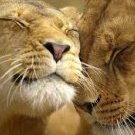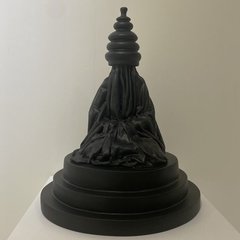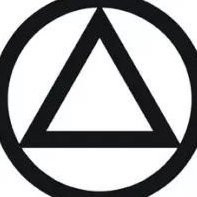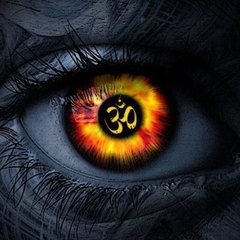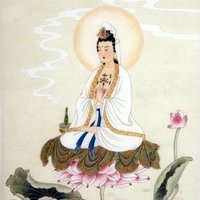-
Content count
6,129 -
Joined
-
Last visited
-
Days Won
3
About Dainin
-
Rank
Dao Bum
Recent Profile Visitors
19,462 profile views
-
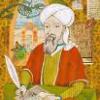
Looking For Training Mostly to Help Me Feel Energy (Which Should I Choose?)
Dainin replied to PestiferMundi's topic in Daoist Discussion
To the OP, If you simply want to feel qi, Pangu Shengong, Fragrant Qigong, or the La Qi method in Zhineng Qigong would probably allow you to experience that pretty rapidly (and less expensively) than the methods you've mentioned. On the other hand. if you would like to do something with the energy you would be feeling, one of those more extensive courses could be more beneficial. -
- 42 replies
-
- mantak chia
- sexual transmutation
-
(and 1 more)
Tagged with:
-
Kitty comeback? I hope so. https://www.smithsonianmag.com/smart-news/rare-endangered-lynx-spotted-in-vermont-for-the-first-time-since-2018-180984970/ https://www.smithsonianmag.com/smart-news/rare-ocelot-caught-on-camera-in-arizona-the-first-sighting-in-its-area-for-50-years-180984921/
-
"Serpent at the gates of wisdom. Where do you belong? Wisdom cannot be transmitted. It keeps you hanging on Do you really serve the Devil If it's all God's plan? Good and evil need each other. Honey I'm your man"
-
This one is highly regarded by several people that I respect (I haven't read it yet though): Daoist Meditation: The Purification of the Heart Method of Meditation and Discourse on Sitting and Forgetting https://www.amazon.com/Daoist-Meditation-Purification-Discourse-Forgetting/dp/1848192118/
-
See May 3, 2016 post:
-
Hello Bums,
- 235 replies
-
- 11
-

-

-
That is a good question and I'm not sure of the answer. Apparently while Peter Deunov's father was a Bulgarian Orthodox priest, he (Peter) attended two Christian (Protestant) theological schools in the United States in the 1890s, and went to medical school at BU for a year before returning to Bulgaria. He was also known as Beinsa Douno and published some books under that name. I just looked in Amazon and there is biography on him and a number of his books have been translated into English. Might be worth checking out. "In 1932, he developed Paneurhythmy exercises: a sequence of exercises performed to music, to achieve inner balance and harmonization. This practice promotes the processes of self-perfecting, expanding of the consciousness and attaining of virtues. The circle dance, is a conscious interchange between human beings and the forces of living nature. Each movement is the expression of a thought. The effect should be that the observer picks up from the movements, the thought or the idea they express. The rhythm in the movement of the physical body leads us to one in our spiritual life." [Wikipedia article] I think that was coincidentally around this same time that Gurdjieff was developing his movements, which were also performed to music. At least one of his main disciples was a composer. I don't know if Deunov and Gurdjieff knew of each other or not. I think there were various systems of calisthenics and other exercises (aka "Physical Culture) that were popular in Europe around the time (and earlier), such as Swedish gymnastics, Indian club swinging, Russian kettlebells, and the Turnverein movement in Germany and among German immigrants in the US. It's possible that this type of material may have influenced them but it's hard to say. I noticed that Aivanhov used yogic terminology in the title of some of his books. Apparently he went to India in 1959 and met Neem Karoli Baba, who later became the guru to Ram Dass (Richard Alpert). I find this kind of stuff to be really interesting!
-
I just remembered another potential candidate for this, the movement and breath practices of Peter Deunov and his student Omraam Mikhaël Aïvanhov. These guys were from Bulgaria and considered themselves to be esoteric Christians. They came out of the Orthodox Church but seemed to incorporate some Indian concepts as well.
-
I just remembered that two qigong sets that I've studied in the past were transmitted and/or created by Chinese masters who were from Christian and Muslim backgrounds respectively. The Wuji Hundun Qigong popularized by Daisy Lee and Francesco Garripolli was the family qigong of Master Duan Zhi Liang, who a Christian. In a documentary about him, he shows a stele said to talk about his family history. The 24 Posture Therapeutic Qigong developed by Master Helen Wu was based on the 20 posture form developed by her grandfather Master Wang Ziping, who was a Muslim. To my eyes these forms seem to be based on Chinese medical theory and I don't find anything particularly Abrahamic in nature about them. Another thing that came to mind was the Iranian practice of Zhurkane (also transliterated as Zoor Khane and various other ways) or Varzesh i Bastani. This is a sort of ritual practiced by men in a special building (the Zhurkane or House of Power) in an octagonal pit. While sacred music is played and poetry is chanted, they go they through a lengthy series of exercises including calisthenics (including those typically called "Hindu" squats and push-ups in the West), weight lifting with large wooden shields, swinging very large clubs called Meels, and high speed jumping and spinning. I first read about this years ago in a little book called Zen Combat. It may date back to pre-Islamic Persian empire times but has been continued to be practiced post-Islamic conquest. Again, mind , body and spirit are being engaged, but I'm not sure if they have concepts analogous to the meridian system and qi found in the Chinese (and Tibetan and Ayurvedic) system. There is a guy in Australia selling equipment and books about this system under the name of "Persian Yoga." https://en.wikipedia.org/wiki/Pahlevani_and_zoorkhaneh_rituals https://medium.com/@dforouznv/house-of-strength-the-history-and-traditions-of-the-zurkhaneh-4c41c58d569a
-
I was interested in this too, a while back, but didn't wind up following up with it mostly because the location was a bit far from me. I don't think they just allow you to show up (at least for the latihan part), and ask you to do some background reading for awhile to make sure you're really interested in it before you can experience it. I think it is based on a sort of chain of transmission going back to the founder, Bapak. At least as of a few years ago there was a YouTube channel where some of the old timers shared their experiences with the organization. The musician Roger McGuinn (of The Byrds) was associated with the practice in the 60s before finding Jesus. The author J.G. Bennett was also involved and wrote a book about it. Some say President Barack Obama's mom may have been associated with them, which freaked out some fundamentalist evangelicals.
-
Yes, his courses are online on the Gumroad platform. He usually gives a small discount during the first few days after releasing them. His monthly email earlier today said: "And speaking of rejuvenation, just in time for Lunar New Year look for our Launch Sale of the Muscle-Tendon Change & Marrow Washing Online Learning Program beginning February 8 at 12pm EST. This very complete online program gives you access to the training methods of Shaolin Monks and Daoist adepts that rebuild the body's fascial system to develop flexible and elastic internal strength and healthy bones, tendons, ligaments, and muscles. Look for our email and facebook posts announcing the launch and sale! https://www.internalartsinternational.com/ https://www.internalartsinternational.com/online-programs/
-
Bumping for two added sections in Tom Bisio's Yi Jin Jing article series above and added release date for his course (February 8, 2024)
-

Origins of dualistic thought in western hemispheres
Dainin replied to S:C's topic in Abrahamic Religions Discussion
One of the older sources may be Zoroastrianism. To quote Wikipedia: " Zoroastrianism, also known as Mazdayasna and Behdin, is an Iranian religion and one of the world's oldest organized faiths, based on the teachings of the Iranian-speaking prophet Zoroaster. It has a dualistic cosmology of good and evil within the framework of a monotheistic ontology and an eschatology which predicts the ultimate triumph of good over evil. Zoroastrianism exalts an uncreated and benevolent deity of wisdom known as Ahura Mazda (lit. 'Lord of Wisdom') as its supreme being and Angra Mainyu as the opposing, destructive spirit and adversary to Ahura Mazda. Historically, the unique features of Zoroastrianism, such as its monotheism, messianism, belief in free will and judgement after death, conception of heaven, hell, angels, and demons, among other concepts, may have influenced other religious and philosophical systems, including the Abrahamic religions and Gnosticism, Northern Buddhism, and Greek philosophy. With possible roots dating back to the 2nd millennium BCE, Zoroastrianism enters recorded history around the middle of the 6th century BCE. It served as the state religion of the ancient Iranian empires for more than a millennium (approximately from 600 BCE to 650 CE), but declined from the 7th century CE onwards as a direct result of the Arab-Muslim conquest of Persia (633–654 CE), which led to the large-scale persecution of the Zoroastrian people. Recent estimates place the current number of Zoroastrians in the world at around 110,000–120,000 at most, with the majority of this figure living in India, Iran, and North America; their number has been thought to be declining. " -
Some of these courses sound interesting including one on the Philokalia: https://olfoundation.net/product-category/ae/kallistos/

